This week we have a bumper guest post: we asked several writers and lit bloggers whose work collectively spans nearly every genre from historical fiction to sci-fi to tell us about their top sources of inspiration. When you’re inspired to start writing a book of your own, try the Now Novel process – it’ll help you find your central idea and start making progress.
Martha Alderson
My inspiration for my own writing and my work with writers comes out of a persistent urge to understand the story beneath the story, the meaning beyond the here and now. Having taught plot and the craft of writing for the past many years, I quickly learned the importance of incorporating the whole writer into the process. Leaving out the writer is like writing a story with no character development, no heart, no soul.
As writers, we bring ourselves to the page – ours strengths and weaknesses, beliefs and judgments, fears and demons. Insight into the similarities between us and the story we craft benefits both the story and the individual. The Universal Story offers writers insight and inspiration. The story of birth, death and renewal. The promise of transformation. I love following the ebb and flow in the energy of stories, our lives, our writing and witnessing the transformation all writers go through when writing a story with a plot from beginning to end.
Martha Alderson is the author of the ‘Plot Whisperer’ books for writers and helps writers create stories with a plot from beginning to end in the ’27-Step Tutorial: How Do I Plot a Novel, Memoir, Screenplay?’ You can visit her at www.marthaalderson.com and follow her on Twitter via @plotwhisperer.
Elizabeth Spann Craig
A considerable source of inspiration to me as a mystery writer is the varied content I read. This content is everything from local news stories to novels. Crime stories in the newspaper can be especially helpful for mystery writers. They outline suspects and hint at possible motives. When a suspect is arrested or found guilty, writers can wonder “but what if one of the other suspects were responsible?” That can conjure up an entirely different ending to the story and provide a little creative license for a crime fiction writer. As far as fictional content, I’m especially inspired by M.C. Beaton’s long-running Hamish Macbeth mystery series. Beaton is a master at character creation. Usually I’m too analytical to lose myself in a mystery, but Beaton still has the ability to thoroughly engage me in her setting and characters.
A second source of inspiration to me is my love of series writing. I enjoy having an established story world in which I can continue visiting my characters. Writing a series means we have many variables already in place when we start writing a new book – the setting, the recurring characters, and the voice. That’s when real creativity can come into play as we come up with new situations and conflicts for the characters to face.
Thirdly, a large source of inspiration are my readers themselves. They encourage me, chide me when I haven’t lived up to their expectations, and offer up ideas. The way that my characters have become real to them so that they want to spend more time with them helps keep me focused and motivated as a writer.
Elizabeth writes the ‘Southern Quilting’ mysteries and ‘Memphis Barbeque’ mysteries for Penguin Random House and the ‘Myrtle Clover’ series for Midnight Ink and independently. Her website’s blog was named by Writer’s Digest as one of the 101 Best Websites for Writers. She curates links on Twitter as @elizabethscraig that are later shared in the free search engine www.writerskb.com.
Stavros Halvatzis
Inspiration is a little like a cat. You may call her, but she decides whether she’ll condescend to let you touch her. Inspiration may spring from any source, really – a movie poster, a phrase from a book, a line of poetry, a scent. For me, once it jumps on my lap, it usually quickly morphs into an idea.
The inspiration for my first book, Scarab, came from speculation about a Hall of Records, a chamber thought to lie buried under the great Sphinx of Giza. I happened to be reading a book about quantum computers at the time and I thought: What if the Hall of Records contains some secret knowledge that can assist in the creation of a machine capable of changing the laws of Physics? And so Scarab was born.
My newest book, The Land Below, comes from my having Googled pictures of the giant crater formed by one of the oldest metor strikes on earth that occurred near the goldmines of Parys in Gauteng, South Africa. I thought: What if all that ostensibly remains of the world were a small number of people who survived a catastrophe centuries ago by climbing down into a goldmine and building a subterranean society down there? How long would it be before they sought to climb back up to the surface and check things out? And what new challenges would they face?
I’m currently fleshing out my next next book in the series, The Land Above, so inspiration is key. Which reminds me, I’d better stock up on that catnip.
Stavros Halvatzis was born in Alexandria, Egypt, grew up in Greece, and lived and studied in South Africa and in London. He’s taught screenwriting and digital media in South Africa and in Australia, where he earned his PhD in narrative studies. He enjoys stories of all sorts, especially science fiction, mysteries, fantasy, horror, and thrillers. He’s looking forward to being the first octogenarian on board the manned mission to Mars, so long as he can upload his next novel to Amazon from up there, that is. You can read his blog on his website and follow him on Twitter via @SHalvatzis.
Kev Heritage
If I relied on inspiration alone, I’d spent most of my time waiting around, staring out of the window and not writing. Instead, I use the following three techniques to force that inspiration out of myself:
Number One: Keeping myself informed
I read science and technology news every day and ponder what impact these developments may have on humans in the future. The what ifs.
It’s pretty much the same advice as ‘read voraciously’, which we all must do. Over time, I’ve learned to trust my subconscious. If I stuff it with as much information as I can, it eventually starts to spill it out into ideas and stories.
Number Two: Shooting from the hip – the pantster approach
For most of my writing, I‘ve no fixed idea about who I’m going to meet or what’s going to happen. This ‘technique’, as it’s laughingly called, pretty much relies on making the empty page my friend.
I find that when I have no idea what I’m going to write sitting down and writing anyway jump-starts my imagination. These days an empty page very rarely puts me off, but if I don’t know how to begin, I type the following mantra over and over:
‘The quick brown fox jumped over the lazy dog.’
It’s a pangram—a phrase that contains all of the letters of the alphabet. I could type other phrases. Anything really. The actual process of typing flips my mind into ‘writing mode’. And, after a short time, something sparks and I’m off. I don’t always need a top-notch idea before starting out. I find ideas flow best when writing, not when staring out of the window. It took me a long time to learn this and was one of the main reasons why I didn’t write. Now, I trust myself to find everything along the way. But it can be scary…
Sometimes just a title alone can get me started—as with my science fiction novel ‘Blue Into the Rip’. I’m still surprised that a book came from it… but that’s exactly what happened.
Often, my stories evolve away from the title, but that doesn’t matter – it’s just a starting point. My present writing project is called ‘Space Adventure Mystery’, but I doubt that will be the final name!
Number Three: Thinking Outside the Dodecahedron
In a world populated with hundreds of well-written books by great authors, I’m always looking for ways to stand out. I cannot pretend to write fully outside the norm, but I do try to startle and entertain by actively doing things differently.
Damn elves!
For instance, you will not find an elf, a dragon or a dwarf—or any of those stock characters in my ‘Ironscythe Sagas’. I’ve nothing against such characters, but they’ve been written about hundreds of times by more accomplished writers than myself. I can’t do any better, and I don’t want to. I much prefer to create my own races and myths.
It’s all in the edit
When using my pantster technique, cliché, more often than not, rears its ugly head. But I have the opportunity to turn it around. To find something startling and unpredictable, hopefully. I can do this at any time in the writing and editing process. This may involve changing the sex of a character, taking a cliché in an unexpected direction, or playing with the story in any other number of ways. It’s calculating, but I find that it can reap great dividends in terms of new ideas and directions.
Kev is a bestselling author of science fiction and fantasy, specialising in action & adventure and paranormal mysteries with a comedic edge. His ‘Into The Rip’ series represents a return to classic, fast-paced adventure sci-fi of the ’50s, but with a modern edge. He was born in the UK in the previous century. Originally from Derbyshire, Kev now lives in the seaside town of Brighton. He is a tea drinker and part-time stand-up comedian. You can read more about Kev and his work on his website, and follow him on Twitter via @KevHeritage.
Margot Kinberg
Writers find inspiration in a lot of different places. And for me, part of making the most of that inspiration is being open to it – being aware of my surroundings and ‘tuning in.’ That said, I find that my inspiration comes from a few different sources. One of them is unquestionably music. Anyone who knows me knows that there’s nearly always a song in my mind. Those songs get me thinking and sometimes are the source of ideas I wouldn’t have thought of otherwise.
Another source of writing inspiration for me is what I observe around me. People, events, and sometimes things get me thinking. I don’t mean that I use particular people I’ve met or know personally in what I write. Rather, an action, a facial expression, or even the way someone’s dressed can inspire a story. I am also very much inspired by the work of other writers. I’m fortunate enough to be connected with a lot of writers in different genres and with different styles. All of them teach me.
Margot Kinberg is a mystery novelist (she writes the ‘Joel Williams’ series) and Associate Professor. She has also been blogging about crime fiction since 2009. She has written three ‘Joel Williams’ novels and is currently working on the fourth. Margot blogs at Confessions of a Mystery Novelist and you can follow her on Twitter via @mkinberg.
C.S. Lakin
The authors who have influenced me greatly for my fantasy and sci-fi writing are Patricia A. McKillip, Ray Bradbury, Isaac
Asimov, and traditional fairy tales. I loved fairy tales growing up and when I read G. K. Chesterton’s treatise on fairy tales in his book Orthodoxy, I was reminded of how important they are to us. We live in a kind of fairy tale, this life in this world, and we often lose the awe and wonder at creation, and fail to see the magic of miracles in every aspect of life. I wanted to capture that essence in my fairy tales. McKillip, to me, is the best fantasy writer ever to live, and her books have greatly inspired my writing style and view of fairy tales.
For my historical Westerns, Zane Grey is my greatest influence. I actually don’t read romance and although I’ve read through a few novels in my genre, my aim with my novels in this genre is more to evoke the era and the locale rather than focus on the romance. Yes, these books are very much romance stories and about relationships, but to me, the point of writing a historical novel is to try to take the reader back in time so they can experience a place they can’t in today’s world. My novels are set in the 1870s and so much of my influence comes from reading nonfiction history books about that time and place. I especially like reading books and writing by people who lived back then or whose families grew up in those Colorado towns. They are greatly insightful, especially in the way they view and word their thoughts and feelings.
C. S. Lakin is a multipublished novelist and writing coach. She works full-time as a copyeditor and critiques about two hundred manuscripts a year. She teaches writing workshops and gives instruction on her award-winning blog, Live Write Thrive. You can follow her on Twitter via @LiveWriteThrive.
Jimmy Rice
Three of my biggest sources of inspiration are:
Public Transport
I carry around a notepad and it regularly comes out on the tube. I owe the commuters of London a lot! You hear some interesting conversations – particularly when a group of lads is talking about girls, or vice versa.
Women
Dates can be goldmines for material – particularly the uncomfortable moments. I’m fascinated by how men interact with women, what the etiquette is on dates. I ask friends about their experiences, which can spark something in my mind.
A Dimly Lit Room
This sounds ridiculous, but before I write a chapter I sit in a dark room with the lamp on and a notepad and think everything through – the jokes, potential problems I might encounter, how the characters are feeling. By the time I get to my laptop I know exactly what I’m doing. Otherwise I’d just end up staring at a blank screen.
Jimmy Rice is a 34-year-old novelist and journalist living in London and has worked for the Sheffield Star, Liverpoolfc.com and Sky News . He is the co-author of ‘The Best Thing that Never Happened to Me’ (with Laura Tait), and the dating diary ‘Plentymorefishoutofwater’. Visit Jimmy’s website or find him on Twitter via @JimmyRiceWriter.
Kristine Kathryn Rusch
Oh, my. Such a tough question. I think inspiration varies as a person grows older. Initially, of course, my inspiration came from the stories I read or had read to me as a child.
My sister Sandy taught me to read when I was three, and I’ve been reading ever since. Some things were pretty common—all the Dr. Seuss, for example—and others not so common. My parents belonged to book clubs, so they enrolled me in several children’s book clubs. They also had books around the house. I read everything (and I do mean everything) in their house, and in my Grandmother’s house. I would have read everything in my aunt’s house as well, but she took the Harlequins away from me because I wasn’t “old enough.” I was afraid of her, so I never tried to cross her. (I always crossed my folks.)
So I suppose my first and probably my most powerful inspiration came from my own family, filled with heavy readers.
Books from that period that made an impact include To Kill A Mockingbird, Something Wicked This Way Comes, Flowers For Algernon, Alfred Hitchcock’s Stories To Read With The Lights On, and The Flame and The Flower.
One book had both a positive and negative impact on me. I read Gone With The Wind when I was about 12, which was the longest book I had ever read. I remember being disturbed by things I didn’t understand (why did Rhett menace Scarlett—and then she woke up happy the next day? My mother wouldn’t answer that one), and even more disturbed by the “Negro dialect” and the portrayal of blacks in the book. I think I discussed it with someone, who told me that it was a historical novel, true to its time period. But I remember being deeply disturbed by the attitudes in that novel. And I hated Scarlett O’Hara with a fierce and burning passion.
I referenced the novel and the film in A Dangerous Road, the first novel in my Smokey Dalton series, and not in a good way. Because by the time I wrote that book, I realized what a horrible racist novel Gone With The Wind really was. (And it has to be bad if a 12-year-old can figure it out.)
My second most important inspiration came from Kevin J. Anderson when I met him in a college creative writing class. He proved to me (and our professor!) that writers could get published. Kev’s been a dear friend ever since, and he is still an inspiration for his work ethic and his ethic-ethics.
My final inspiration is whatever I’m reading at the moment, particularly short fiction. Writers do things that I constantly believe to be impossible, and yet, they manage to pull it off. I wonder how I could do that, and so I try.
That’s today’s answer on my inspirations. If you ask me tomorrow, I’ll probably give you a completely different answer—at least for part of it. Because the inspirations change decade by decade—and day by day.
Kristine Kathryn Rusch’s career has spanned almost forty years and almost every genre of fiction (and a few of nonfiction). She writes under several pen names, including Kristine Grayson for romance and Kris Nelscott for mystery. She’s an award-winning writer in all of her genres and is probably best known for her science fiction and fantasy, which she writes under her own name. Her SF has hit bestseller lists worldwide and won her many awards, including science fiction’s prestigious Hugo Award. She’s the only person in the history of the field to win the Hugo as both a writer and the first and only female editor of ‘The Magazine of Fantasy & Science Fiction’. You can find out more about all of her work on her website.
Alexandra Sokoloff
Three of the largest sources of inspiration for my thriller and screenplay writing are:
Personal Experience
Before I sold my first screenplay, I worked in the Los Angeles County prison system, teaching juveniles, mostly teenage gang kids and very young girls who had been arrested, mostly for prostitution. Yes, they arrested the girls instead of the men who were trafficking and abusing them. The whole experience taught me a lot about the vicious circle that the so-called justice system is. We are failing our next generation, and it’s heartbreaking. I know I write crime thrillers because of that early experience, and I draw on the emotion of it – and the criminal procedure I learned during that period of my life – all the time.
Anger at Social Injustice
I also find rage a great motivator. I get tremendous inspiration from things that make me angry. Social injustice especially. My supernatural thriller Book of Shadows, and another very different crime book that I’m outlining now were both partly inspired by the gross miscarriage of justice that resulted in the accusation and conviction of the West Memphis Three in Arkansas: three teenage boys wrongly accused of the murders of three little boys. I am especially outraged by crimes against children and women: rape, abuse, trafficking. My Huntress/FBI thrillers definitely draw on my rage about those crimes and my anger at society for not making their elimination a top priority.
Dreams
And just to lighten it up a little: I also get a lot of ideas from my dreams. My supernatural thriller The Price and several of my screenplays came from ideas I dreamed. I keep a dream journal, which I find is key to remembering dreams, which you may have to coax out at first. But I think any writer who isn’t keeping a dream journal is working too hard! Our subconscious minds love to work on story problems when we’re asleep.
Alexandra Sokoloff is the bestselling, award-winning author of eleven supernatural, paranormal and crime thrillers who the New York Times has called “a daughter of Mary Shelley.” As a screenwriter she has sold original suspense and horror scripts and written novel adaptations for numerous Hollywood studios (Sony, Fox, Disney, Miramax), for producers such as Michael Bay. Her Thriller Award-nominated Huntress Moon series is out now from Thomas & Mercer. Visit Alexandra’s website or find her on Twitter via @AlexSokoloff.
Laura Tait
Three of my strongest sources of inspiration are:
My friends
I see my mates a lot, and they’re a constant source of comedy. They make me laugh loads, and it inspires me to make the ‘funny’ scenes as natural as possible. Readers aren’t stupid, and I think they can tell if a joke is forced, so I try to let humour play out the way it does in in real-life situations.
Music
I’m never not listening to music – at work, during dinner, while I walk. Like with books, I can love one song because it’s deep, clever and ambiguous and love the next because it’s simple and feel-good. My iPod on shuffle is beyond random – so far today it’s gone from Vampire Weekend to East 17 to Elvis Costello to Phantom of the Opera to Muse to Lithuania’s entry in the 2013 Eurovision Song Contest. I’m especially inspired by clever, witty lyrics – Belle & Sebastian are my favourite band. I know some writers prefer the quiet – including my co-writer, Jimmy Rice (though that might just be to stop me singing) – but it stops me feeling restless.
Other writers
Whenever I hit a mental wall with my writing I take a break, and go and read a chapter of a book I love. As well as reminding me how to string a sentence together, it gives me a reader’s perspective, so I find when I go back to my computer I’m no longer agonizing over how to phrase that one sentence I’ve been tearing my hair out over for 45 minutes, but instead thinking about how to get the story out.
Laura Tait, 33, is a writer for ‘Stylist’ and ‘Shortlist’ magazines in London and co-author of ‘The Best Thing That Never Happened To Me’ (with Jimmy Rice). Their second novel is out in January 2016. You can find her on Twitter via @TaitGallery.
K.M. Weiland
I like to say that inspiration is everywhere—and it really is. I’ve picked ideas from such disparate places as the dust on my windowsill (I’m a terrible duster) to my pets to the grapefruit I had for breakfast. It’s really just a matter of being open to whatever you’re experiencing at the moment.
But I will say that most of my inspiration is usually the result of other people’s art. The three big ones are most definitely books, movies and music.
I feed off other people’s stories and glean little tidbits that inspire stories of my own. The characters and themes in books and movies and the half-answered questions in songs are endless sources of inspiration for me.
K.M. Weiland is the IPPY and NIEA Award-winning and internationally published author of the Amazon bestsellers ‘Outlining Your Novel’ and ‘Structuring Your Novel’, as well as ‘Jane Eyre: The Writer’s Digest Annotated Classic’. She writes historical and speculative fiction from her home in western Nebraska and mentors authors on her award-winning website Helping Writers Become Authors. You can follow her on Twitter via @KMWeiland.
Where do you find your writing inspiration? Tell us in the comments below, then get inspiration for stories using our story brainstorming dashboard.


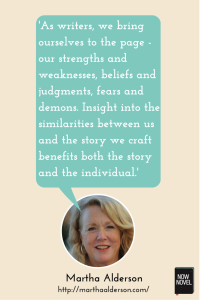


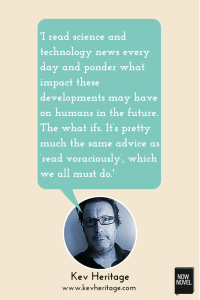
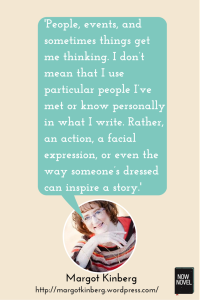
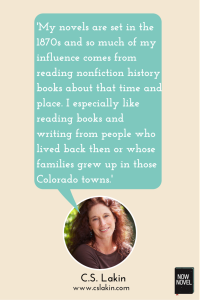
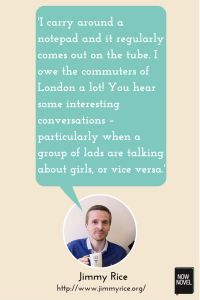
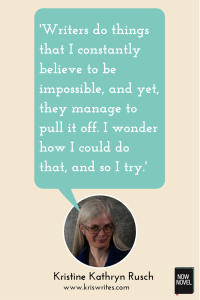
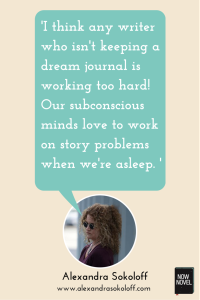
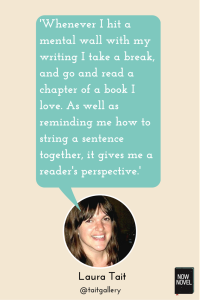
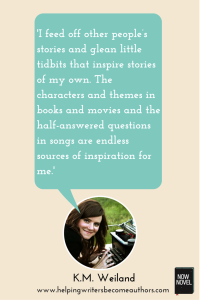
One reply on “Writing inspiration: 11 authors on how to get inspired to write”
[…] 11 Writers on Writing Inspiration by K.M. Weiland […]